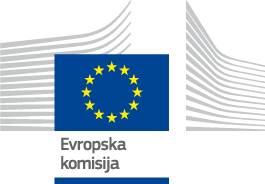

Country Factsheet
Finland’s fisheries areas face several challenges. These include a decline in the number of commercial fishermen; the vulnerability of the fisheries sector to market fluctuations; an increase in the seal and cormorant populations in coastal areas; environmental degradation, especially eutrophication in the Baltic Sea; and competition between commercial fishing, recreational fishing and environmental conservation. The 10 Finnish FLAGs focus on boosting and optimising activities throughout the entire value chain; promoting innovation across sectoral boundaries, creating new ways of thinking and doing business, while also ensuring the sustainable use of natural resources; and encouraging cooperation.
Fishing is an important commercial and recreational activity. In 2012, there were about 1 500 fishing businesses, with the vast majority (97%) owning a single vessel. The fisheries sector has 295 full-time equivalent (FTE) employees. The total revenue generated by the Finnish fleet in 2014 was €52 million. The total value of the fisheries sector is about €900 million per annum.
The aquaculture sector employs a further 349 FTEs.
Contact details of the managing authority can be found here.
More information about national EMFF programmes can be found here.
During Axis 4 (EFF), Finland had eight FLAGs in total: five coastal FLAGs (including the autonomous Åland islands) and three inland FLAGs, in the lake districts in the East and North of the country.
Achievements of Axis 4:
An evaluation of the EFF Axis 4 activities for this period concluded that the "new" approach was successful in terms of the development and renewal of fisheries areas: 58% of project promoters said they could not have implemented their projects without FLAG support, and those who could have, were able to do things on a bigger scale.
The main challenges that community-led local development will have to address in Finland’s fisheries areas in the coming years include:
To cope with these challenges, the objectives of the Finnish Operational Programme 2014-2020 are:
The objective of CLLD for this period is to support these strategic goals in the local context, including by:
The number of FLAGs have been increased to ten. They include the former eight FLAGs, whose strategies have been selected for this period as well, plus two new groups that fill in geographical gaps on the south-west coast and archipelago side, and in the inland Lake Päijänne area. Compared to 2007-2013, the total budget for CLLD has been increased slightly, so the average budget per FLAG remains similar.
The fisheries network will be hosted by the National Rural Network / Agency for Rural Affairs, which is meant to ensure good coordination, cost efficiency and other synergies between the two networks.
The total budget for the fisheries network for the whole programming period is €900 000.
The network aims at:
Click here for the National Network contact details.
For the EMFF funding period, 12 cooperation projects were reported by the managing authority by December 2021. These included a large-scale cooperation project between Baltic FLAGs to increase the knowledge on the impact of growing seal and cormorant populations on small-scale coastal fisheries as well as projects to exchange knowledge and experience, for example on specific fishing gear with fishers in Poland and on fisheries and cultural heritage with young people in Estonia and Finland.
For information on how cooperation was programmed and organised in Finland, click here.
For the moment, Finland is not implementing a multi-fund approach for CLLD. However, in most cases, FLAGs and LAGs do share the same offices and administrative support costs, which allows for good synergies.
| Code | Name | Region | Surface area (km²) | Population | Population density (per km²) | Employment in fisheries* |
|---|---|---|---|---|---|---|
| FI201 | Bothnian Bay / Perämeri FLAG | Ostrobothnia Region |
10591 | 357994 | 34 | 660 |
| FI202 | Ostrobothnia FLAG | Ostrobothnia |
6750 | 160000 | 24 | 628 |
| FI203 | Bothnian Sea and Lake Pyhäjärvi FLAG | Southwest Finland Satakunta |
4671 | 181000 | 39 | 245 |
| FI204 | Archipelago Sea / Saaristomeri FLAG | 7967 | 370000 | 61 | 660 | |
| FI205 | South Finland / Etelä-Suomi FLAG | 14141 | 855000 | 60 | 489 | |
| FI206 | East Finland / Itä-Suomi FLAG | 329 | 702446 | 10 | 450 | |
| FI207 | Lapland FLAG | Lapland |
35579 | 27400 | 1 | 100 |
| FI208 | Kainuu-Koillismaa FLAG | Ostrobothnia Region |
154 | 37894 | 246 | 120 |
| FI209 | Central Finland FLAG | 24385 | 571650 | 23 | 115 | |
| FI210 | Åland FLAG | 13325 | 28983 | 19 | 399 |